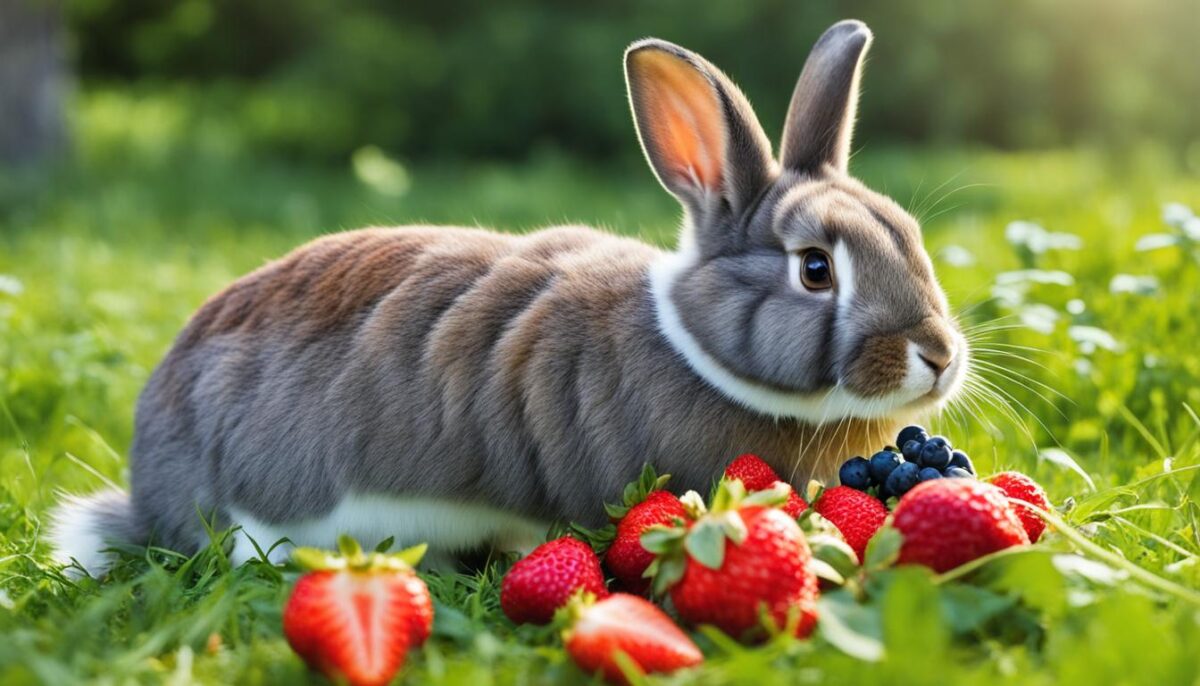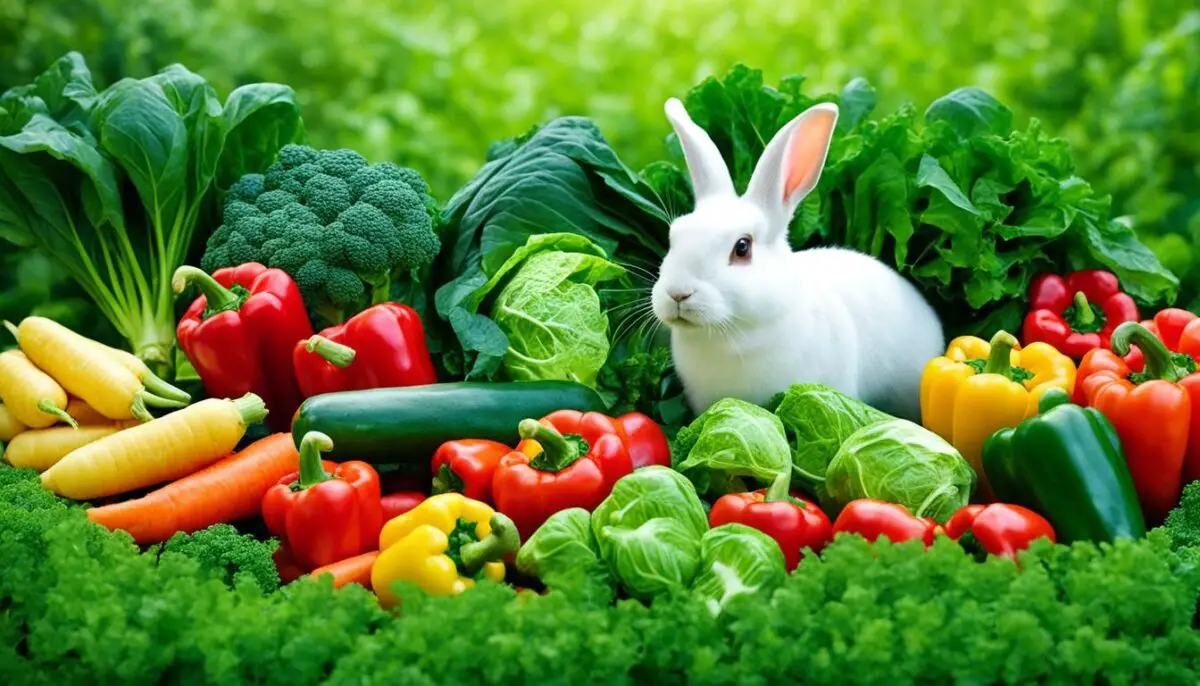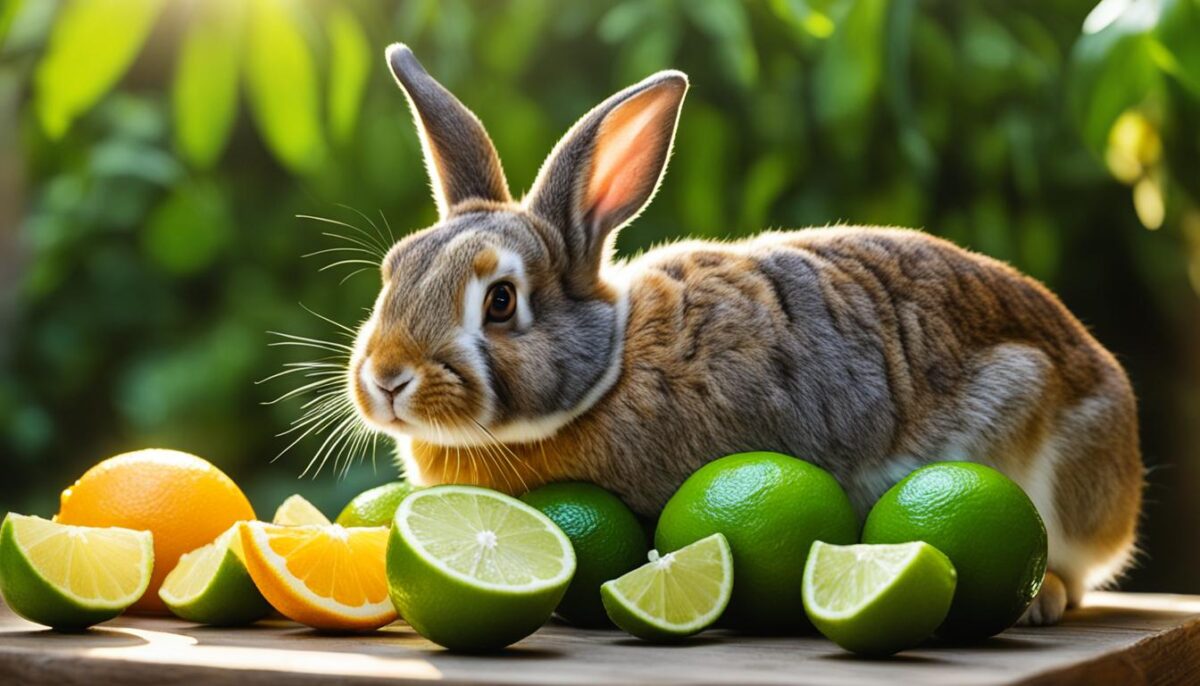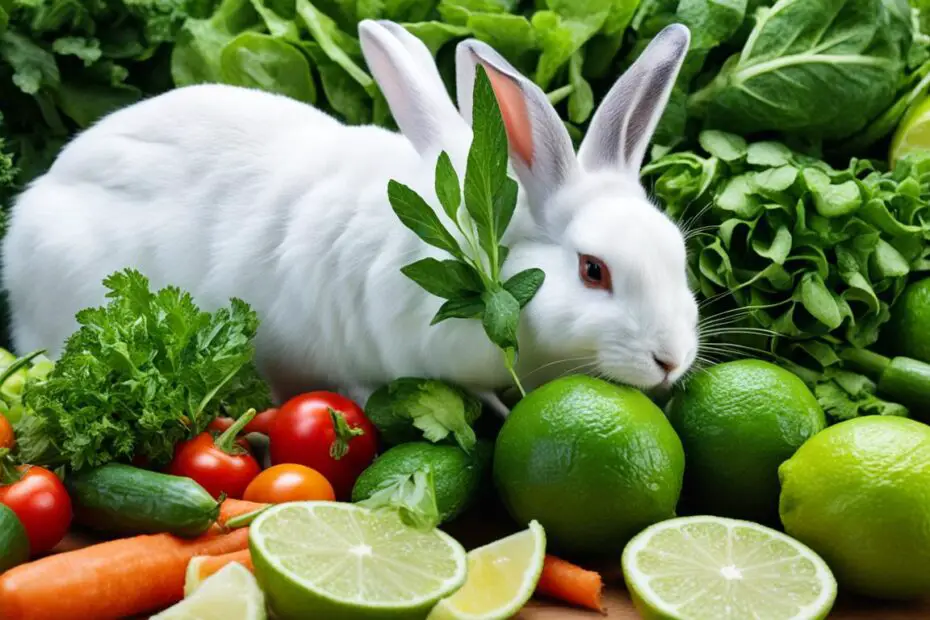Rabbits are adorable and curious little creatures known for their love of munching on fresh greens. As a rabbit owner, it’s essential to provide your furry friend with a balanced and nutritious diet to ensure their overall well-being. In this guide, we’ll explore the topic of whether rabbits can eat lime and discuss the potential benefits and considerations when incorporating lime into their diet.
Key Takeaways:
- While rabbits can eat lime, it should be fed in moderation to avoid health issues.
- Lime is rich in nutrients like vitamin C and fiber but contains high sugar content.
- Introduce lime gradually to prevent digestive problems and ensure it is properly prepared.
- Include a variety of fruits, vegetables, and hay in your rabbit’s diet for a well-rounded meal.
- Always monitor your rabbit’s reaction and consult a veterinarian if you have concerns.
Which Fruits Can Rabbits Eat?
Rabbits can safely enjoy a variety of fruits as part of their balanced diet. While it’s important to provide them with the necessary nutrients, fruits should be given sparingly due to their high sugar content. Incorporating a variety of fruits can add flavor and nutrition to your rabbit’s meals and serve as occasional treats. Here are some rabbit-safe fruits to consider:
- Apples
- Bananas
- Blackberries
- Blueberries
- Cherries
- Cranberries
- Grapes
- Kiwi fruit
- Mangoes
- Oranges
- Pears
- Pineapples
- Raspberries
- Strawberries
- Watermelon
When feeding fruits to your rabbit, it’s important to remove any seeds or pits as they can pose a choking hazard. Additionally, washing the fruits thoroughly before offering them to your furry friend helps to eliminate any potential chemical residues.
Remember to introduce new fruits slowly and in small quantities to avoid any digestive upset. Monitoring your rabbit’s reaction is crucial, as some fruits may not agree with their sensitive digestive systems.
Benefits of Fruits in a Rabbit’s Diet
Fruits provide rabbits with essential vitamins and minerals, as well as dietary fiber. They can also offer hydration due to their high water content. However, the sugar content in fruits should be carefully monitored, as excessive consumption can lead to weight gain, tooth decay, and other health issues.
| Fruit | Nutritional Benefits |
|---|---|
| Apples | Rich in fiber and vitamin C |
| Bananas | Good source of potassium and vitamin B6 |
| Blueberries | Packed with antioxidants and vitamin K |
| Strawberries | Contain vitamin C and manganese |
| Watermelon | High water content and a source of vitamins A and C |
By incorporating a variety of fruits into your rabbit’s diet, you can help enrich their meals and provide them with beneficial nutrients. However, it’s essential to maintain a balanced diet by including other food groups like vegetables and hay.

What Vegetables Can Rabbits Eat?
Rabbits can safely enjoy a wide range of vegetables as part of their diet. These nutritious greens provide essential vitamins, minerals, and fiber for their overall well-being. However, it’s important to be mindful of which vegetables are safe for rabbits to consume regularly.
Here is a list of vegetables that are considered safe for rabbits:
| Vegetable | Serving Size |
|---|---|
| Alfalfa Sprouts | 1-2 tablespoons |
| Artichoke Leaves | 1-2 leaves |
| Asparagus | 2-3 spears |
| Beet Greens | 1-2 leaves |
| Carrots | 1-2 baby carrots or 1/2 small carrot |
| Celery | 1-2 small sticks |
| Chard | 1-2 leaves |
| Cucumbers | 1-2 slices |
| Kale | 1-2 leaves |
| Lettuce (dark green/red leaf, butter, Boston, Bibb, or Romaine) | A handful of leaves |
| Pumpkin | 1-2 tablespoons |
| Radishes | 1-2 radishes |
| Spinach | 1-2 leaves |
| Squash (yellow, butternut, pumpkin, zucchini) | 1-2 tablespoons, cooked or raw |
| Watercress | A small handful |
While the above vegetables are generally safe for rabbits, it’s important to note that some vegetables should be fed in moderation due to their high oxalate content. These vegetables include broccoli, Brussels sprouts, cabbage, cauliflower, and spinach. Excessive oxalates can contribute to bladder sludge in rabbits, so it’s best to limit their consumption of these vegetables.
Tip: Introduce new vegetables gradually to your rabbit’s diet to avoid digestive upset. Observe their reaction, and if any adverse symptoms occur, consult a veterinarian.
“Providing a varied diet that includes a mix of safe vegetables will help ensure your rabbit receives the necessary nutrients for a healthy and balanced diet.”
Remember to always wash vegetables thoroughly to remove any pesticides or harmful substances. Serving the vegetables fresh and raw is the best way to retain their nutritional value.

By including a variety of safe vegetables in your rabbit’s diet, you can provide them with the necessary nutrients and keep their meals interesting and enjoyable. Vegetables can also be used as treats for your rabbit, rewarding them with their favorite greens.
Next, we’ll explore the benefits of adding lime to a rabbit’s diet and how to safely incorporate it into their meals.
The Benefits of Adding Lime to a Rabbit’s Diet
Incorporating lime into a rabbit’s diet can provide several benefits. Lime is rich in vitamin C, which helps boost the immune system, and fiber, which aids in digestion. The antioxidant properties of lime can help protect the rabbit’s body from free radicals and prevent cellular damage. However, it is important to feed lime in moderation to prevent excessive sugar intake.
Lime can be given as a treat or incorporated into homemade rabbit treats. Always ensure the lime is fresh, properly prepared, and free from any pesticides or chemicals.
To give you a better understanding of the nutritional value of lime for rabbits, here is a table outlining its key nutrients:
| Nutrient | Amount per 100g |
|---|---|
| Calcium | 33mg |
| Phosphorus | 186mg |
| Potassium | 102mg |
| Vitamin C | 29.1mg |
| Fiber | 2.8g |

As you can see, lime is a nutritious addition to a rabbit’s diet, providing essential minerals such as calcium, phosphorus, and potassium, as well as vitamin C and dietary fiber.
It’s important to note that while lime can offer health benefits, it should be given in moderation as part of a balanced diet. Too much sugar can lead to obesity and dental problems in rabbits. Always consult with a veterinarian to ensure you are meeting your rabbit’s specific nutritional needs.
How to Safely Feed Lime to Your Rabbit
When it comes to incorporating lime into your rabbit’s diet, it’s crucial to prioritize their safety and well-being. By following a few simple guidelines, you can ensure that your furry friend enjoys this treat without any adverse effects.
- Introduce lime gradually: Start by feeding small amounts of lime to allow your rabbit’s gut flora to adapt. This gradual introduction will help prevent any digestive issues that may arise from a sudden change in their diet.
- Remove seeds and pits: Before feeding lime to your rabbit, make sure to remove any seeds or pits. These can pose a choking hazard or lead to digestive complications.
- Wash thoroughly: Rinse the lime thoroughly to eliminate any traces of pesticides or chemicals that may be present on the skin. This step is essential in ensuring that your rabbit is not exposed to harmful substances.
- Cut into small, bite-sized pieces: Slice the lime into small, bite-sized pieces that are easy for your rabbit to chew and swallow. This will also help prevent any choking incidents.
- Monitor your rabbit’s reaction: After feeding your rabbit lime, observe their reaction closely. Look for any signs of digestive issues or discomfort. If your rabbit shows any adverse reactions, discontinue feeding them lime.
By following these safe feeding practices, you can incorporate lime into your rabbit’s diet as a delicious and nutritious treat.
Conclusion
In conclusion, rabbits can safely incorporate lime into their diet as part of a balanced and varied meal plan. Lime offers nutritional benefits, such as vitamin C and fiber, that contribute to a rabbit’s overall health. However, it is important to remember that lime should be fed in moderation due to its high sugar content.
When introducing lime to your rabbit, it is crucial to do so gradually and ensure that it is properly prepared and free from pesticides or chemicals. Additionally, it is essential to provide a diverse range of other fruits, vegetables, and hay to ensure your rabbit receives a well-rounded and nutritious diet. By monitoring your rabbit’s reaction to new foods and consulting a veterinarian if you have any concerns, you can ensure their diet and health are optimized.
Remember, while lime can be a suitable addition to your rabbit’s diet, it should not be the sole focus. Providing a variety of foods and paying attention to portion sizes will help keep your rabbit healthy and happy. So go ahead and introduce lime as an occasional treat, but always prioritize their overall nutrition and well-being.
FAQ
Can rabbits eat lime?
Yes, rabbits can safely eat lime as part of their diet. However, it should be fed in moderation.
What other fruits can rabbits eat?
Rabbits can also eat apples, bananas, blackberries, blueberries, cherries, cranberries, grapes, kiwi fruit, mangoes, oranges, pears, pineapples, raspberries, strawberries, and watermelon. Remember to feed fruits sparingly due to their high sugar content.
What vegetables can rabbits eat?
Rabbits can safely eat alfalfa sprouts, artichoke leaves, asparagus, beet greens, carrots, celery, chard, cucumbers, kale, lettuce (dark green/red leaf, butter, boston, bibb, or romaine), pumpkin, radishes, spinach, squash (yellow, butternut, pumpkin, zucchini), and watercress. Some vegetables should be fed in moderation due to their high oxalate content.
What are the benefits of adding lime to a rabbit’s diet?
Lime is rich in vitamin C, which boosts the immune system, and fiber, which aids digestion. Additionally, the antioxidant properties of lime can protect the body from free radicals and prevent cellular damage.
How can I safely feed lime to my rabbit?
Start by introducing lime gradually in small amounts. Wash the lime thoroughly, remove any seeds or pits, and cut it into small, bite-sized pieces. Always monitor your rabbit’s reaction and ensure the lime is fresh and free from pesticides or chemicals.


